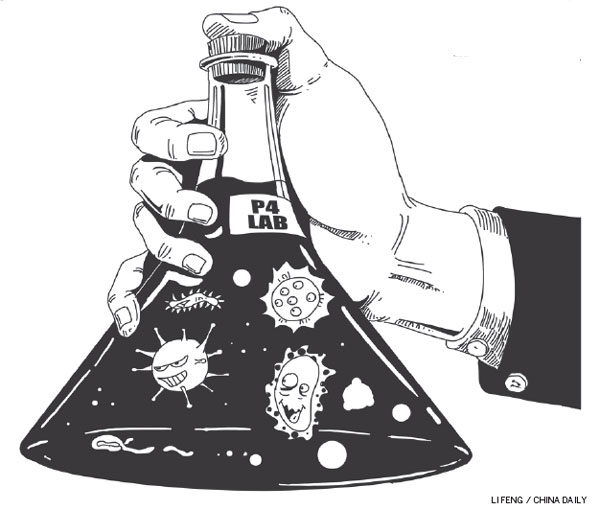Be ready to fight potential risks from P4 lab
By Shan Juan (China Daily) Updated: 2015-02-06 07:56

The US reportedly has at least eight P4 labs. Other industrial countries like Germany, Australia, Canada, France and Russia too have one or more such facilities. Faced with emerging pathogen-caused diseases like SARS in 2003 and the more recent H7N9 bird flu - and Ebola in West Africa - China realized years ago the need to establish facilities to study deadly pathogens for national protection. The threat of East Turkestan Islamic Movement militants to disrupt the Beijing 2008 Olympic Games with biological weapons made the need even more urgent.
The Wuhan laboratory will indeed help Chinese scientists and virologists study the Ebola virus - and other deadly pathogens - and find a cure for it as well as devise ways to check its spread. The Ebola virus has infected more than 21,000 people and killed at least 8,600 in West Africa, according to the World Health Organization.
Since the first Ebola outbreak in Africa in the 1970s, countries like the US, Canada, Germany, France, Russia and Australia have carried back live Ebola virus to their laboratories for research.
Now the Chinese government will do the same. But the government will also have to tighten supervision and monitoring of research on dangerous and exotic pathogens, and strengthen the management of the facilities where such research is carried out. Besides, the tools equipped to counter risks must be battle ready and under good control to ensure that they work properly in time, and not backfire and cause harm to the people.
This is very important because as a country we cannot afford another accidental leakage of pathogens like the one in 2004.
The author is a writer with China Daily. shanjuan@chinadaily.com.cn

I’ve lived in China for quite a considerable time including my graduate school years, travelled and worked in a few cities and still choose my destination taking into consideration the density of smog or PM2.5 particulate matter in the region.











